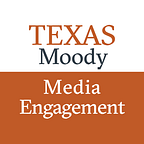Let’s face it, communicating facts can be difficult
But, we can explore ways to draw people’s attention to important information
By Erika Franklin Fowler and Natalie Jomini Stroud
Information is everywhere. Citizens are inundated with it, and sorting through the sheer volume of information–let alone identifying quality information–on any given topic can be overwhelming. As if information overload were not challenging enough, partisan bickering over which facts are important and even which facts are accurate makes the task even more difficult.
In this polarized and politicized environment, some people hunker down into ideological camps, engaging with information in ways that confirm or reinforce their existing point of view. Others attempt to sort through the messages to find facts amid the opinion and false information. And some simply opt out of engaging with news and information altogether.
But, that doesn’t mean we should give up. We can work to capture people’s attention for important information in ways that will be beneficial to society and our democracy.
We can work to capture people’s attention for important information in ways that will be beneficial to society and our democracy.
Different goals require different types of information. If we know people don’t have the time or motivation to pay attention to in-depth information on all issues, then we might encourage the use of endorsements or other cues from trusted sources. If we seek to increase participation, it is helpful to encourage citizens to join groups and to consume like-minded information, but if we want to encourage empathy or deliberation, we need more balanced information that compassionately represents others. Sometimes people learn best through experiences, or getting issue-oriented information from organizations they trust. There’s no one-size-fit-all solution.
Figuring out how to convey important information requires understanding how we make decisions about allocating our attention. People are easily distracted. A provocative image, a loud noise, or a flashing line of text across a screen — these techniques can attract the public’s limited attention, whether for admirable or nefarious ends.
We also make choices based on whether we think media content is interesting or not, whether it is news or reality television or scripted comedies. Decades ago, people made a choice between watching the news on television or doing something else. Today there are innumerable options. Research shows that when given a choice between news and entertainment, a significant share of the public will opt for entertainment.
Research shows that when given a choice between news and entertainment, a significant share of the public will opt for entertainment.
Those who are interested in news are more likely to select news that expresses views in line with the beliefs they already hold rather than news articulating an opposing point of view. It also matters what kind of news. When thinking about political content, some research suggests that the public prefers and is more likely to click on information about campaign strategy than on in-depth information about the economy or education.
Getting beyond these barriers, there is still the question of availability. Access to quality information is limited in countless ways. Access to cable television, the internet, and hard copy newspapers, for example, all require financial investment. People also may have limited educational backgrounds, making it difficult for them to absorb the information.
These issues apply to all sorts of information, including political and scientific facts. By its very nature, scientific information — so crucial to informed decision making — is difficult to communicate. Scientific evidence is technical and both the subject and the procedures for developing scientific information are unfamiliar to much of the public. Sometimes scientific studies offer conflicting findings resulting from a scientific study, or there are varying degrees of uncertainty about the conclusions.
Finding strategies for artfully conveying complex information in ways that break down attention and trust-based barriers represents the most important challenge in our politically tumultuous time. But it’s one we can meet, and science can help.
Finally, news organizations and individual journalists are under constant pressure, not just from the challenges we all face in gathering and sorting information, but for financial reasons as well. Most U.S. news organizations are for-profit businesses that need to keep an eye on their ratings, circulations, and page views, as well as those of their competitors, to ensure that they stay in business. This means that the news sources we rely upon for information have more considerations than merely informing the public.
So, what are the steps we can take? Here are five questions to guide our path forward. First, what type of information will best aid the goal we seek? Second, how can we motivate people to pay attention? Third, how do we communicate with people where they are? Putting information on a website is not enough. Fourth, how can complex information be shared with audiences? Here, we can systematically test new ways of conveying information like online videos, virtual reality, flow charts, and infographics. Fifth, how can we help journalists to report information accurately and to convey uncertainty appropriately? Research suggests that the inclusion of study limitations in news coverage of cancer research can increase trust in both journalists and scientists.
All hope is not lost. We need sustained efforts to determine which information to provide and how to tailor it in ways to overcome informational deficits and educate the public. Finding strategies for artfully conveying complex information in ways that break down attention and trust-based barriers represents the most important challenge in our politically tumultuous time. But it’s one we can meet, and science can help.
This piece is adapted from “Thinking Strategically About Informing the Public on Complex Issues,” part of a white paper series on media and democracy commissioned by the John S. and James L. Knight Foundation. Read the complete paper and learn more about how science can help inform how we communicate complex information.
